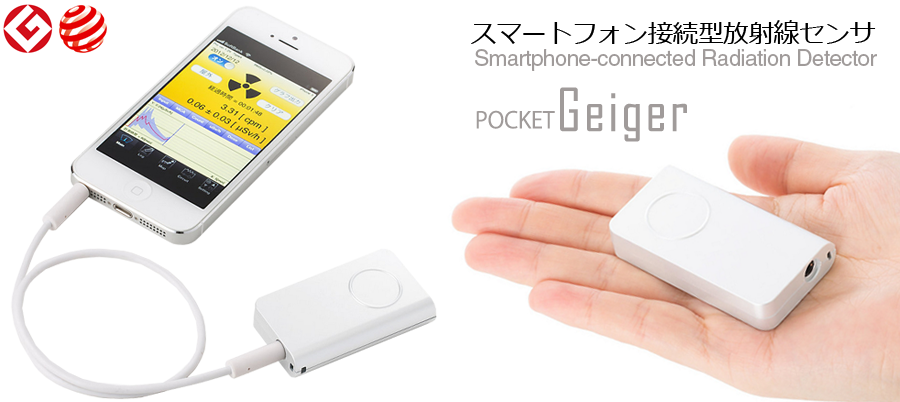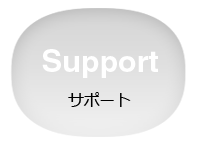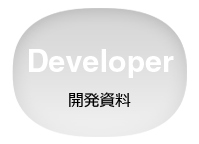Last update: 2017/1/30
Radiation-watch.orgプロジェクトは開発成果をクリエイティブ・コモンズ(CC BY 3.0)ライセンスの元でオープンソース化しています。以下では、ポケットガイガーの回路図、仕様、ソースコード、実験結果を、順次公開します。これらは全世界において、商用・非商用を問わず自由に再配布・改変・公開することができます。なお一部のコンテンツは英語またはオランダ語のみとなります。

POCKET GEIGER by Radiation-Watch.org is licensed under a Creative Commons Attribution 3.0 Unported License.
技術資料 / Technical Documents
- ケースの開け方 / How to open the case
- ポケットガイガーの回路図・設計図 / Circuit diagrams and CAD data of Pocket Geiger series
- ポケットガイガーType5とマイコン(Arduino、PIC)やMacとの接続方法 / How to connect PocketGeiger Type5 with Microcomputers such as Arduino and PIC.
- ポケットガイガーType6とPCやMacとのシリアル接続方法 / How to connect PocketGeiger Type6 with PC or Mac via USB Serial connection
- ポケットガイガーType6 Androidアプリのソースコード / Pocket Geiger Type6 Android APK source code
- ポケガをベースにしたシンチレーション検出器の作成 / Creating Scintilation Detector based on POKEGA
- Type4/5の応答特性試験結果 / Dose rate response of Types 4 and 5
- Hp(10)スコープに基づく性能試験結果 / Performance testing based on Hp(10) scope by Mr. Ing. T.P. Kuipers in the Netherlands
- Cs-137線源を用いた簡易キャリブレーション実験の結果 / Calibration testing using Cs-137 supervised by Dr.Ichimiya in KEK
- オランダ国立計量局より発行されたH*(10)スコープに基づく性能証明書 / Certification from the Dutch Metrology Institute tested by Drs. Ing. Cees van't Wout and Mr. Frans J.M. Bader based on H*(10) scope
- オランダ放射線防護学会に投稿されたポケットガイガーの性能に関する論文 / Dutch Journal of Radiation Protection (Issue 2, 2011, ISSN 1879-9620)
- 考察 / Considerations
- 参考文献 / References
We would like to take this opportunity to thank you for the voluntary contributions of Mr. Ing. T.P. Kuipers, Dr.Ichimiya, Drs. Ing. Cees van't Wout and Mr. Frans J.M. Bader.
Those reports and data are disclosed with permission of the experimenters.
ケースの開け方
How to open the case.
ポケットガイガーの回路図・設計図 Circuit diagrams and CAD data of PocketGeiger series.
ポケットガイガーType1回路図
PocketGeiger Type1 Circuit Diagram
ポケットガイガーType1ガーバーデータ
PocketGeiger Type1 Gerber-formatted PCB Data
ポケットガイガーType5回路図
PocketGeiger Type5 Circuit Diagram
ポケットガイガーType2/3/4/5金型図面
CAD Data of Plastic-injected Case for Types 2, 3, 4 and 5
ポケットガイガーType3/4/5とマイコン(Arduino、PIC)の接続方法
How to connect PocketGeiger Types 3, 4 and 5 with Microcomputers such as Arduino and PIC.
Type5
ポケットガイガーType5はマイコン接続専用に開発されています。Type5は、DC3~9Vの幅広いレンジで起動します。なるべくノイズのない、安定化された電源(USB電源や電池など)を使って下さい。
You should supply non-noise DC 3 to 9V power source into PocketGeiger Type5 module.
Type5のリリースノート(記事)をこちらからご覧いただけます、併せて参考にしてください。
You can also check release note for Type5 device.
Type5を利用した組込システムの制作事例をこちらからご覧いただけます。
You can also check various, sample implementations using Type5 device.
ポケットガイガーType5のArduino向けソースコードがGitHubにて開発されています。
A new source code for Arduino with Type5 PocketGeiger is available on GitHub.

ポケットガイガーType5インタフェース仕様
PocketGeiger Type5 Interface Specification
ポケットガイガーType5 - ARDUINO接続方法
How to connect PocketGeiger Type5 with ARDUINO
ポケットガイガーType5マイコン接続方法
How to connect PocketGeiger Type5 with Microcomputers
ARDUINOサンプルプログラム(Windows通信ソフト付き)
ARDUINO sample program with Windows monitoring application
Type4
ポケットガイガーType4をマイコンと接続するためには、10~15V及び、40~50Vの、二系統のDC電源が必要です。ノイズのない安定化された電源(電池など)を使って下さい。またマイコンとの接続には、抵抗値の修正が必要です。
You should supply two types of non-noise DC power into PocketGeiger Type4 module; one is 10 to 15V and another one is 40 to 50V, and should swap a resistor on Type4 PCB.
ポケットガイガーType4テストピン配置図
PocketGeiger Type4 Testpin Specification
ポケットガイガーType4マイコン接続方法
How to connect PocketGeiger Type4 with Microcomputers
Type3
ポケットガイガーType3をマイコンと接続するためには、9VのDC電源が必要です。ノイズのない安定化された電源(電池など)を使って下さい。またマイコンとの接続には、抵抗値の修正が必要です。
You should supply non-noise DC 9V power source into PocketGeiger Type3 module, and should swap a resistor on Type3 PCB.
ポケットガイガーType3テストピン配置図
PocketGeiger Type3 Testpin Specification
ポケットガイガーType3マイコン接続方法
How to connect PocketGeiger Type3 with Microcomputers
ポケットガイガーType6とPCやMacとのシリアル接続方法
How to connect PocketGeiger Type6 with PC or Mac via USB Serial connection
- Type6のシリアル通信プロトコル / USB Serial protocol for PocketGeiger Type6
- 開始方法 / HOW TO START
- PC -> Type6: "S"
- Type6 -> PC: "S\r\n"
- Type6 -> PC: ">(Signal),(Noise)\r\n" for every 100msec, where () is CPM
- 終了方法 / HOW TO STOP
- PC -> Type6: "E"
- Type6 -> PC: "E\r\n" end of measurement
ポケットガイガーType6 Androidアプリのソースコード
Pocket Geiger Type6 Android APK source code.
http://radiation-watch.sakuraweb.com/share/PocketGeigerType6_for_Android.zip
ポケットガイガーをベースとしたシンチレーション検出器の作成
Creating a Scintillation Detector based on POKEGA.
ポケットガイガーをベースにシンチレーション検出器を作成されている方のページです。
- 自作シンチレーション検出器の作り方と性能評価 / かにこむ青木
- http://www.kani.com/ycrms/pkg_csi/
- Adobe page is in Japanese only, please use English tlanslation (Google) if needed.
Type4/5の応答特性試験結果 / Dose rate response of Types 4 and 5
Co-60, Cs-137およびBa-133線源を使ったポケットガイガーType4/5の応答特性に関する調査結果です。
出典:野崎 雄太、藤淵 俊王、寺﨑 健人、村﨑 裕生、倉本 卓、梅津 芳幸:自作ワイヤレス線量モニタリングシステムによるガンマ線、線量測定の基本特性評価、第10回九州放射線医療技術学術大会(2015.11、宮崎)
Performance testing based on Hp(10) scope by Mr. Ing. T.P. Kuipers in the Netherlands
- Measurement range: using Cs-137 ( 0.1uSv/h - 200mSv/h ) and Co-60 (186uSv/h - 4.7mSv/h)
- Direction dependence: at the degree of -45, 0 and +45
- Spectral software testing: using Am-241 and Co-60
- Energy efficiencies: using H-3, C-14, Am-241, Cs-137, Ni-63, Cl-36, Co-60, Sr-90, Tc-99 and Fe-55

You can see and download the raw document including all experimental data of this section (Google docs).
Fig.1-1 Measurement range using Cs-137
Fig.1-2 Testing facilities
Calibration testing using Cs-137 supervised by Dr.Ichimiya in KEK
- Cs-137 (2.02MBq), 0.16uSv/h - 2.34uSv/h
Fig.2-1 Sensitivity of the Smart Radiation Detector for gamma particles
Fig.2-2 Experiment Scene

You can see and download the raw document including all experimental data of this section (Google docs).
Certification from the Dutch Metrology Institute tested by Drs. Ing. Cees van't Wout and Mr. Frans J.M. Bader based on H*(10)
- Cs-137 ( 0.58uSv/h - 739uSv/h ) with copper shield
- Sr-90 / Y-90 ( 4.46mGy/h ) with and without copper shield
Fig.3-1 Results for linearity and reprehensibility of the detector
Fig.3-2 Certification from the VSL

You can see and download the raw document including all experimental data of this section (Google docs).
Dutch Journal of RadiationProtection (Issue 2, 2011, ISSN 1879-9620)
Considerations
- The detector shows linear response for Cs-137 but will be saturated in high dose rate over 10mSv/h because of the sampling rate (44.1khz).
- We don't have to care about the saturation in consumer use.
- We have to write the dependency in the user's manual especially for users who are going to measure a pollution level such as soil.
- The analyzer function should be improved.
- The detector has high sensitivity for mid and high energy beta radiation, for example Cl-36 or Sr-90, so a copper shield should be installed when we calibrate and measure dose rate in uSv/h.
- It seems that the response curve will be flatten by using copper filter although a number of samples are limited.
Noted by Yang, Radiation-watch.org engineer, Aug 13, 2011
References
[kitaguchi] H.Kitaguchi, H Miyai S.Izumi and A.Kaihara: Silicon Semiconductor Detectors for Various Nuclear Radiations, IEEE TRANSACTIONS ON NUCLEAR SCIENCE, VOL 43, NO. 3, JUNE 1996
[hamamatsu] Si photo diaode applications (Japanese only)
[tjerk] Kuipers, Tjerk et al.: Feasibility studyof a low cost wireless ionizing radiation sensor network, Proceedings of Third European IRPACongress 2010 June 14-16
[kitaguchi] Hiroshi Kitaguchi et a.l: SEMICONDUCTOR RADIATION DETECTOR, United States Patent 4879466, Nov.7, 1989
[harvard] Alpha, beta and gamma penetration and shielding, Harvard Natural Sciences Lecture Demonstrations




































.jpg)

